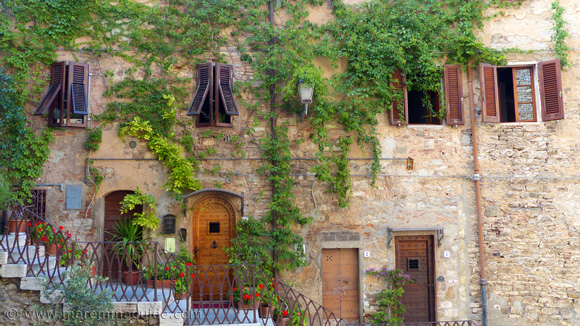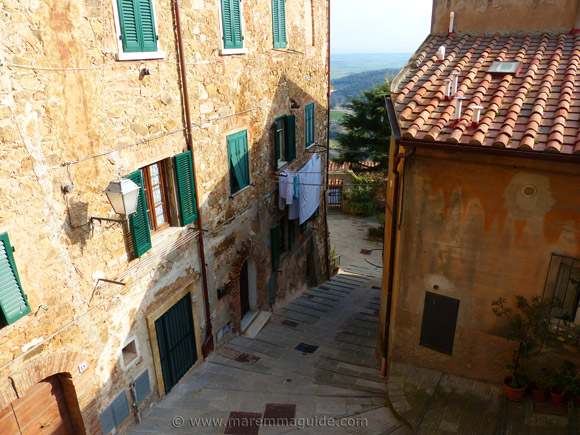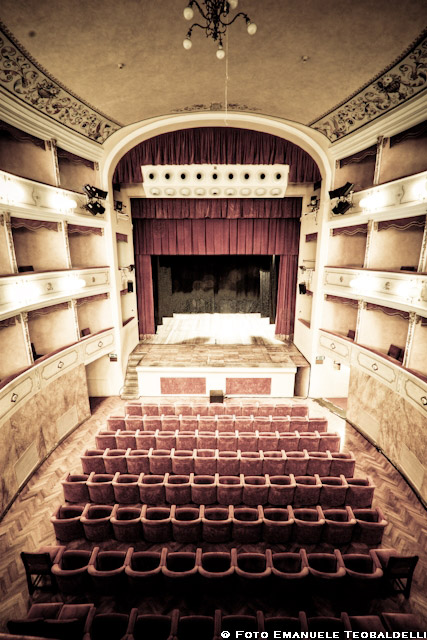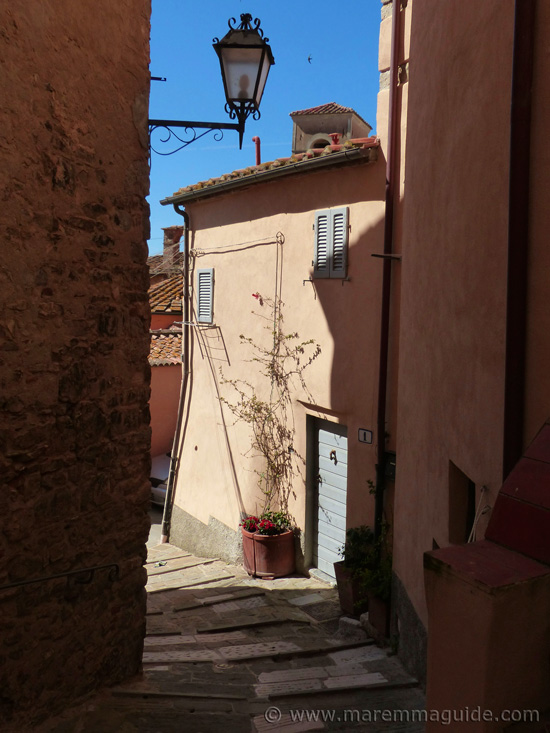Campiglia Marittima Tuscany Italy
A medieval city of arches that will make you swoon :)
Campiglia Marittima in Tuscany: Maremma's medieval city of arches and a sparkling jewel in its crown. No matter how many hundreds of times I have wandered around this stunning ancient city's streets and sat in its quiet piazzas, I will never tire of doing so.
As Maremma hill towns go, it is larger than most and fully lived-in, yet magically you will still find yourself completely alone walking along one of its many palazzo-lined narrow streets. On most days you can even have its medieval castle, with its stunning views to the coast and beyond, to yourself too.
Whether amateur or professional, any photographers or artists amongst you will literally swoon when you stroll up and down the hillside upon which the city is built, and along levels that take you to tiny squares and courtyards and their Tuscan doors. Old doors that have seen so much and which hold behind them entrances to apartments, as well as secret dark rooms and more passageways.
 Piazza del Mercato
Piazza del Mercato
Campiglia Marittima is a place where all roads seem to lead to the "Rocca", the castle at its very top.

And if you plan the time to walk up and down all of them and combine your visit with a trip to the nearby Parco Archeominerario di San Silvestro, you will have every child in your family falling asleep well and truly exhausted, with smiles on their faces :)
 Via Dini
Via Dini
If you are looking for a holiday location that is as authentic rural Tuscany as it gets, with a pace that will enable you to chill out and unwind, close to a beautiful coast and beaches and many wonderful places to visit and explore that your kids will love...
Not to mention home to great DOC local wines, enough history to make your head spin, great trekking and cycle routes, and a lot of lovely places to stay.
Then you will be hard-pressed to find another to match Campiglia Marittima.

The Palazzo Pretorio is one of Campiglia Marittima's most distinguishing buildings. It's multiple levels, long ago filled-in original windows and doors and a frontage covered with the coats of arms of the city's ruling Podestàs from the late middle ages/early Renaissance period, fascinates me.
Although one of them definitely gives me the heebie-geebies!
 Palazzo Pretorio on the left in Via Cavour with entrances to the Archaeology Museum at the top and the Mineral Museum below.
Palazzo Pretorio on the left in Via Cavour with entrances to the Archaeology Museum at the top and the Mineral Museum below.
The coats of arms of the city's 15th and 16th century Podestàs.


This is the one - from 1621 - that scares me! That same year, on 28 February, at 30 years of age, Cosimo II de' Medici, the Grand Duke of Tuscany and Maremma's ruler, died and his eldest son, Ferdinando II de' Medici, the became the Granducato di Toscana.

Inside the Palazzo you will find two museums: the Museo di Palazzo Pretorio and the Mineral Museum (see below for more information).
If your kids are into these kind of horrible things! then you might want to know that the first is meant to still have its torture room along with the archaeological finds from the excavation of the Rocca di Campiglia Marittima - the castle.

There is a small square off the main streets that most people probably won't wander as far to see, called the Piazza del Silenzio (the "square of silence"), which my husband has renamed the "Piazza delle Panda" because the last time we were there with visiting friends it was full of 4x4 Fiat Pandas of every colour.
 Via Corta
Via Corta
Our friends couldn't believe that a Fiat Panda was even coming up one of the streets we were walking up because it had to come through through this passageway, up a hill that was taking its toll on my friends legs, and around acute angles with only millimetres clearance either side.
Click on the video below to take a walk down the same street.

We followed it through another medieval gateway, around two more acute turns, past a piazza and down a ramped street to outside its front door!

A lovely coloured Ape parked in Piazza del Silenzio.

The video
The tiny gardens
You will find tiny gardens tucked into every corner and onto windowsills. The street to the left if this garden goes under the building behind to join the equally narrow parallel street below.


Another well-tended plot and window-sills.

And another in Via Vecchio Asilo, which is home to many a tiny ape as well as a few Italian scooters ;)

And then, as you turn another corner, an ingenious vertical garden outside Number 13.

Everyday life in it's narrow streets
Whereas unlike many other of Maremma's hill towns and villages, and despite the closure of the mines in 1979, Campiglia Marittima's population since the mid 1800's has continued to grow annually: and no wonder, it is a beautiful ancient city.
But like all of the others, "knowing thy neighbour", also includes knowing well their choice in bed linen and underwear!

Catching the opportunity to dry some washing on a warm late March afternoon.


Campiglia Marittima's doors
The entrance to the local infant school is the door within the left hand wall of this archway. Coming down the road (this photograph is taken looking up it) it has a distinct damp and dark atmosphere and struck me as the antithisis of what I would expect the front door to a modern day school for toddlers to be like. Just goes to show you that doors, like clothes on people, don't tell the whole story.

This is the door opposite. I love the colour and can't help wondering where it leads to even if I would have to bend over double to enter!

The one at the end of this arched ancient entrance to the city is number 10A.

Sunlight never reaches its steps. And the "road" to it turns an acute ninety degrees at them, to open into the street in the photograph below with the white sheets hung out to dry.


These "Hobbit" doors are under yet another arch beneath another "palazzo".

And this one just caught my eye because of its lovely blue patina-like colour.



I love this patched old door in Via degli Scudi. "Scudi" in Italian means "shields", so this is the old Road of the Shields.
 Via degli Scudi
Via degli Scudi
The view down Via degli Scudi and it is a very steep down and impassable by cars after the yellow house!

The view up.

A little bit of a lot of history
The earliest records of the city are from 1004, when it was known as just, "Campillia", coming from the Latin, "campus". In 1862, it gained its "Marittima", meaning "of the Maremma".
 The city originally had three entrances, the crenelated Porta a Mare to the left, the Porta Pisana or Porta di Pozzolungo, and the Porta a Terra.
The city originally had three entrances, the crenelated Porta a Mare to the left, the Porta Pisana or Porta di Pozzolungo, and the Porta a Terra.
The 1004 document was in fact a record of the then owner of Campillia, one Count Gherardo II della Gherardesca, giving the rights to half of Campiglia Marittima's castle, its territories and church, together with shares of his neighbouring castles of Acquaviva, Biserno, and Monte Calvi (now known as the Rocca di San Silvestro) to the monks of Saint Maria di Serena, near Chiusdino.
 The original coats of arms of the cities of Pisa, Firenze, Campiglia Marittima and the Gherardesca Counts that owned it above the Porta a Terra.
The original coats of arms of the cities of Pisa, Firenze, Campiglia Marittima and the Gherardesca Counts that owned it above the Porta a Terra.
The first settlements on the hill and surrounding land, however, go way back to Etruscan and Roman times and were mining ones. The hills of the Val di Cornia within which Campiglia Marittima sits are part of Maremma's mineral rich, "colline metallifere", which have been mined since prehistoric times.
The town started to take shape in the middle ages around the eighth and ninth centuries, with some hut dwellings on the hillside. By the eleventh century there were sufficient buildings and populous for it to be described in sources of that time as "urban Campillia".
But it is not until a century and a half later, with the city of Pisa on the scene, that Campillia becomes a city.

And it is then that a part of Campiglia Marittima - the medieval folks of this part of the world always seemed to like to give bits of their castles to others, rather than whole ones - was donated to the monastery of Saint Giustiniano in Falesia, Piombino, owned by the same Conte Gherardo II della Gherardesca.
 The view looking down Via Parenti to the Palazzo Pretorio.
The view looking down Via Parenti to the Palazzo Pretorio.
In 1139, Count Ildebrando della Gherardesca donated half of Biserno, Vignale, Campiglia Marittima and Monte San. Lorenzo to the Archbishop of Pisa.
An action which led in 1158 to the City of Pisa taking complete control of Campiglia Marittima's "castello" (castle) and, hence it town and lands, because that year the Archbishop also obtained ownership of the monastery of Serena. (If you recall half of the castle had already been given to them by Count Gherardo II della Gherardesca.)

The Rocca di Campiglia Marittima remained under the control of Pisa for two hundred and forty-eight years, until the year 1406 when the city of Firenze conquered Pisa. The Florentine army didn't hang around occupying Campiglia Marittima, making it the city's southern-most outpost within its Maremma Pisana domains.
Campiglia's strategic importance as a stronghold for Florentine troops lasted throughout the fifteenth century and into the sixteenth, until the point that Firenze saw no more need to occupy it for military purposes. Having finally subdued the City of Pisa in 1509 and consolidated its power in the area, Firenze started to decrease its military presence. With which came an economic decline of the city of Campiglia Marittima.
The plague
And then famine hit the city and with it came the plague. The once rich and prosperous Campiglia Marittima Tuscany became deserted, reduced to just 316 souls.
Things you must see and things that might interest you
If you like the tiny details of Italian life as much as I do, then look along the walls of Via Roma, just a little below the Piazza Garibaldi with the monument to Giuseppe Garibaldi and very close to the entrance to the street in the video (on the same side of the road), and you will see this stone engraved conversion chart of weights and measures from "misure antiche" (old measures), to metric and decimal units.
I loved to find out that one "sacco" (sack) of grain is equivalent to three litres, that one "fiasco" (flask)/ two "boccale" (tankards) of oil or wine is equal to two litres...
If you click on the image a larger one will appear - that I have darkened - so that you can read more easily the measures.
Propositura di San Lorenzo
Also in Via Roma is the medieval Propositura di San Lorenzo (the rectory of Saint Lorenzo) with its decorated vaulted ceiling and early fourteenth century Madonna and Child by Maestro di San Torpè.


Campiglia Marittima's castle - the Rocca and the view
The iron entrance door into the castle grounds is up this street, past the restored house on the left with its lovely iron blue-grey star and moon gateway, taking you through the doorway filled with blue sky that you can see in this photograph.

The doors are meant to close at 5pm, but I have found them open much later than this, even during late winter. So if you arrive late - for example after a great trip to the Parco Archeominerario di San Silvestro below - still give it a try.
The views are nothing short of dreamy. Especially if it is summer and the fields below are filled with watercolour blocks of zinging yellow Tuscan sunflowers and a wind has cleared the air so that you can see over the glistening baby blue waters, past the hill top of Etruscan Populonia, to the islands of Elba and Corsica beyond.
Not to mention the intriguing and once parish church of Pieve di San Giovanni situated outside of the city walls below.
The Rocca di Campiglia Marittima.

For kids who love minerals: the Mineral Museum
It isn't big, but when you have a child who loves all things mineral/crystal and you are in the mineral-rich hills of Maremma, then this little museum is perfect for a twenty-minute or so change of scene for them.

And, as it is located in Palazzo Pretorio, only a few feet from the towns central piazza of Piazza della Reppublica, if they are old enough, you could let them explore the museum whilst you soak up the scene and sip a cappuccino or glass of local wine from one of the two cafe's out door tables :)
The door of the museum is the one in the bottom left of this photo with the white awning of one of the bars in the square at the bottom of the road.

Note: Don't be put off of you pop your head inside the doors of the museum and see only a few minerals. Those are of the small shop. The museum display is in a back room.
The Museo di Palazzo Pretorio
With its entrance above the Mineral Museum, the Museo di Palazzo Pretorio is home to both the "Archivio Storico" (the historical archive) and the Museo di Campiglia Marittima. Within its rooms are the archaeological finds from Campiglia Marittima's castle with educational illustrations of its development over the ages.
Alongside glass panes, bones, and a series of ceramics dating from the 11th to the 15th century, there is also an intact unique of its kind 14th century suit of armour, a helmet and some weapons.
And the torture room I mentioned above.
Of particular interest to the archaeologists who found it is a fragment of stone engraved with the battles of Amazons by a Pisan soldier during the second half of the fourteenth century. It is thought that he reproduced a scene he knew from a Roman sarcophagus in his home city.
I haven't been inside yet, but when I do I'll post a photo or two.
And just a short walk to the bottom of town...
Templar legends: the Pieve di San Giovanni
Now you won't find many recommendations within the pages of this guide telling you about churches that you should visit - not because there aren't many that you should, for on the contrary there are many with significant histories or importance in the Regione of Toscana here in Maremma, it is just that they aren't the usual kind of place I write about. Whilst I pop my head inside one or two when I find them open, they just aren't the usual kind of place that I like to explore.
But the Pieve di San Giovanni is different.

TIP: If you don't show your children my photos in the page then you will have a mini "treasure hunt" and something of fascination to tell them whilst you are there, which will give you time to take a look around without any moans about being bored :)
And just a very short drive out of town...
The Parco Archeominerario and the Rocca di San Silvestro
 The Rocca di San Silvestro
The Rocca di San SilvestroIf you have children you must take them to the Parco Archeominerario di San Silvestro: I guarantee they will love it :)
For a guided tour through a mine and its galleries and tunnels, hard hats and all! My daughter Sophia was just a few years old when she first went inside with her own wobbling hard hat on! And a chance to say hello to the resident - and friendly - bat.
An evocative kilometre long mine train ride through the mountain along the Lanzi-Temperino Tunnel, with an explanation along the way of what life inside it was like for the miners. The presentation is in Italian, but you can collect an English information sheet at the ticket office that will tell you everything that the guide says during the trip.
A short trek to an abandoned 10th century fortified "Rocca", that takes you through Mediterranean macchia, past ancient Etruscan and medieval "pozzo" mine shafts that children were winched down into to excavate, across a metal-grilled bridge, and onto the bedrock of the "rocca" itself.
And then the trek back in time to catch the return train for a last glimpse of inside the mountain in the dark.
NOTES. Be careful to time your trip here to give you time to do it all. The park guides recommend that you plan for a whole day to be able to see the mine as well as make the trek to the Rocca, but you can do it all in a morning or afternoon if you start early and plan well.
The published times of the mine train departures don't tell you that you need to be at the ticket office at least 20 minutes before each one leaves or you won't be able to go. I know :(
And,
if you want to take a look at the mine and mineral museum - the "Museo dell'Archeologia e dei Minerali" - where the ticket office is - it is well worth a visit - or if the little ones amongst you want to purchase some minerals or sparkly crystals before they set off home, you might need to plan to do so before you set off for the train and Rocca, as it closes before the last train gets back.
The Parco Archeominerario di San Silvestro.
Then come back to Campiglia Marittima for a well earned gelato, coffee and stroll to the balcony on the castle to watch the sunset go down over the Isola d'Elba.
A bliss of a day out :)
Campiglia Marittima Events
Theatre
Teatro dei Concordi, the once 600 seater elliptical theatre that first opened its doors in 1867, after many changes in ownership, restorations, closures, change of use into a cinema, and threat of being transformed into private dwellings and more! now seats 200 people in splendour.

As well as the annual theatre season shows, the Teatro dei Concordi also hosts a children's season, Sunday shows for children, concerts, and a summer programme for locals and tourists alike called, "Garlic and Friends".
Details can be found here.
 The Giuseppe Garibaldi monument in Piazza Garibaldi.
The Giuseppe Garibaldi monument in Piazza Garibaldi.
Festival Days in Campiglia Marittima Tuscany
There are three great celebration days in Campiglia Marittima: one in April, May, and August.
The first is the Trofeo del Drago. An annual medieval archery competition that brings teams of archers from all over Tuscany to the town for a morning of arrows flying in the grounds of the castle.

Followed by a flag waving presentation and the trophy awards in the main square in the afternoon. The competition kick's off at 10:0o, and the music and flags - by the Rione Santa Maria di Pescia - at around 16:00. I say around 16:00 as it depends on when the archers lunch has finished or not and who gives them a hefty nudge to get moving. You can watch the band practising and the lunch unfolding - if you haven't joined them! - in Piazza Mazzini.
(In fact I have the perfect place for you to watch them: from your own window of a holiday home you won't want to leave! See below.)
The second, called "Giornata Storica" and originally the start of spring "Calendimaggio" event, takes place on the first Sunday after the 15th of May. The whole town turns into a medieval costumed set involving the theatre, with artisans and street acrobats, archery, musicians, parades, and a palio.
The third, called "ABC Festival APRITI BORGO", runs throughout a week in the middle of August in atmospheric corners of the town, and culminates with a medieval feast of traditional recipes.
During these events you'll get to try Campiglia's specialty and crumbly "torta" dessert of sugar and pine nuts, the "schiaccia campigliese". A protected - Denominazione Origine Protetta - recipe of ancient origins that dates back to 1868 (and probably well before), handed down verbally from generation to generation and a favourite amongst the Teatro dei Concordi theatre goers in the 19th century.
Best served with a glass of local Vin Santo or white wine.
Best place to stay
The holiday home that you won't want to leave. A medieval house in the heart of town where dreams of living in Tuscany like a local come true, even if you only have a week or two's vacation.

Ann's house. Take a look inside.
Explore some more...

















